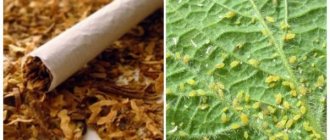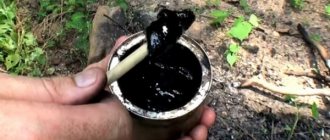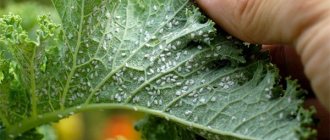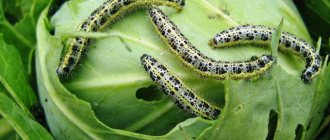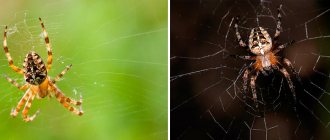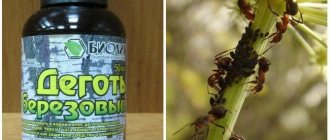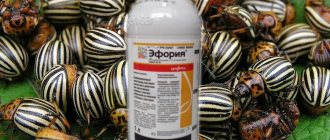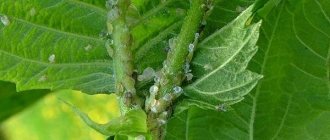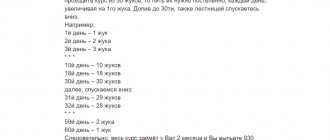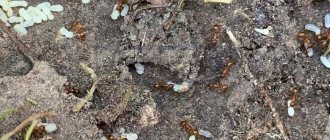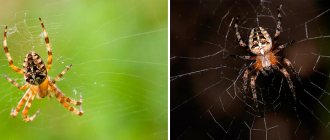Gardening stores offer many different preparations that guarantee good results for getting rid of garden problems and improving the quality of the harvest. But many experienced gardeners go the other way and resort to time-tested folk remedies.
One of them is ordinary baking soda, which not only eliminates various diseases of currants, but also significantly increases the yield of berries. To get a positive effect, you must follow the prescribed dosage and carry out the necessary processing correctly.
Benefits of soda
When using sodium bicarbonate, it is possible to achieve the following results:
- get rid of fungal diseases and harmful parasites;
- improve the taste of berries;
- prolong fruiting.
If you use regular baking soda for the preventive treatment of currants, it helps prevent infection of the garden crop with powdery mildew, aphids, gray mold and fungal diseases.
Expert opinion
Did you know?
Soda has good disinfecting properties and is absolutely safe for both human health and vegetable and fruit plants.
Therefore, this treatment of garden crops affected by pests and diseases can be done even during their active fruiting.
Advice from experienced gardeners
Experienced gardeners do not resort to chemicals when pests and diseases appear, but use folk remedies, since they are harmless and can be used during the period of active fruiting. Baking soda or soda ash is considered the most effective. Thanks to the white powder, you can quickly get rid of aphids and diseases on currants, and also significantly increase and extend the yield period. When using soda for currants, you need to listen to the advice of experienced gardeners:
- soda is diluted only in water at room temperature;
- spraying the bush is carried out in dry weather;
- for better binding, crushed or liquid laundry soap is added to the soda solution;
- if the recipe uses soda ash, then when using baking soda, the dosage is increased by 2-3 times;
- the soda solution must be prepared immediately before use;
- Since soda ash can be harmful to the body, store it out of the reach of children and pets.
Powdery mildew
If the season is rainy and too cold, currant bushes are often affected by powdery mildew. The main symptom of the disease is a white or grayish coating over the entire surface of the leaf blades. To rid a garden crop of unpleasant symptoms, you need to add the following to 10 liters of water:
- 100 g sodium bicarbonate;
- 50 g grated laundry soap.
Spray the affected bushes generously with a thoroughly mixed solution once a week, preferably in the evening, until the symptoms of the disease completely disappear.
This method can be used when infection occurs during fruiting and chemicals cannot be used to treat fruit and berry crops. Also, a similar solution helps fight kidney mites.
Processing rules
To maximize the expected effect and minimize harm to the plant, you should follow the list of simple recommendations:
- Mandatory adherence to the recipe for preparing solutions is required. The consequence of insufficient concentration is a decrease or complete absence of the expected effect.
- Frequency of treatment – no more than once a week. Exceeding prescription dosages and frequent spraying are fraught with side effects. They can manifest themselves in the loss of inflorescences and leaves. The result is a decrease in yield.
- Harvesting is safe 2/3 months after the last procedure.
- Spraying is carried out from bottom to top. The recommendation is due to the characteristics of the concentration of aphids. Its accumulations are preferentially located on the back side of the leaves.
- The timing is based on favorable weather conditions. The procedure should be abandoned in case of strong winds or expected precipitation. High air movement speed will not allow for high-quality processing. Rain will wash away some of the product.
- A spray bottle is required for spraying. An alternative is a bottle sprayer. Using the latter is difficult in relation to trees.
- The product must be used on the day of preparation.
Aphids on currant bushes
Currant leaves and ants scurrying along the trunks signal that the plant is infested with aphids. If you do not take measures to combat harmful insects during this time, the plant will not be able to avoid severe consequences in the future, such as:
- curvature and deformity of shoots;
- drying and underdevelopment of inflorescences;
- sudden growth stop;
- chopping berries.
Recommended for you:
How to use soda against weeds in the garden
When harmful parasites appear on fruit bushes, it is necessary to generously spray the currant leaves with the prepared solution, per 10 liters of water:
- 5 tablespoons of food powder;
- 30 g of liquid or laundry soap.
This procedure is carried out 3-5 times per season, with an interval of 5-7 days.
Baking soda against aphids: principle of action
When you apply the prepared aphid soda mixture to plants, it gets onto the insects' body and causes irritation and damage to the skin. It will not be possible to run away, fly away or crawl away, since the soap added to the solution has a gluing effect; the pests stick to the foliage and to each other and gradually die. Soap also allows the soda solution to remain on the surface of the foliage longer, preventing new infections. To prepare soda solutions for aphids, you can use both baking soda and soda ash; there is no fundamental difference. Calcium improves plant immunity and helps plants recover faster, which is why some people prefer soda ash. However, soda ash should be used carefully so that pest control does not lead to excess calcium.
Soil deoxidation
Sodium bicarbonate is a good soil deoxidizer, so its use will be very useful in summer cottages with too acidic soil types. If you water the soil with soda solution when planting young bushes, this will help normalize the acid-base balance of the soil. Gardeners often use baking soda as a fertilizer:
- 1 tbsp regular soda;
- 1 liter of warm water.
It is necessary to water the soil with such a soda mixture to feed plants in the spring and mid-autumn. This will help improve the soil structure and normalize acidity.
Precautionary measures
Although baking soda is considered safe for human health, working with large quantities of the substance requires the use of protective equipment.
- If there are wounds on the skin, the soda solution can cause discomfort.
- The alkaline environment of the soda solution dries the skin. After working with the drug, you must wash your hands thoroughly and apply an emollient cream.
- Soda ash has an aggressive effect on the skin and mucous membranes. Be sure to wear rubber gloves when working with the solution and dry substance.
- Soda ash should not be stored near food to avoid accidental consumption.
Gray rot
Gray rot can cause significant harm to currant bushes and destroy future harvests. To prevent this from happening, it is necessary to carry out preventive measures in early spring and spray the bushes with an aqueous solution of soda:
- 10 liters of water;
- 100 g food powder.
Expert opinion
We recommend!
Additional procedures include pruning and thinning of bushes, removing unnecessary growth and fertilizing with mineral fertilizers.
When planting young fruit and berry bushes, it is recommended to add 100 g of sodium bicarbonate to the prepared hole. The powder is not only able to protect a young plant from root rotting, but will also favorably influence its survival rate and further development.
Recommended for you:
How to use baking soda for wireworms
Advantages of the method
The popularity and widespread use of the approach are due to the following “advantages”:
- minimal likelihood of harm to health from the crop;
- acceleration of recovery of affected parts;
- increasing productivity;
- quick results;
- calcium enrichment;
- protection against a number of diseases and suppression of the spread of mold fungi (manifested due to characteristic bactericidal properties);
- low cost;
- Possibility of use for preventive purposes.
Sodium bicarbonate and yeast - root feeding
Yeast is a good natural biostimulant; it improves plant growth and strengthens their immunity, and sodium bicarbonate enhances its beneficial effect. A soda solution with yeast has a positive effect on microflora beneficial to plants, and also suppresses the active activity of various harmful microorganisms. To prepare this fertilizer you will need:
- 5 liters of warm water;
- 500 g fresh yeast, or 100 g dry;
- 100 g sodium bicarbonate.
Dissolve yeast in +40 degree water, add soda. The solution must be kept in a warm place for a day, then add another 5 liters of water to the container. Spray the currant bushes with the resulting mixture.
This mixture is not stored for a long time, it must be used immediately after fermentation, the remains can be poured under the bush, it will serve as a good feed for the root system. It is advisable to carry out this procedure three times during the summer season: during the period of bud formation, during active flowering and after harvesting.
Preventative treatment
In order to organize preventive measures designed to prevent the appearance of pests or the development of diseases, in the spring it is recommended to irrigate bushes, herbaceous plants, and trees with an environmentally friendly composition.
Preparation of Burgundy liquid:
- Copper sulfate is measured out - 70 g.
- Dilute in a container into which 250 ml of hot water is poured.
- After filtering, pour into cool water - 5 liters.
- Then measure out the soda ash variety - 80 g.
- Dissolve it in slightly warmed water - 5 liters.
Combine both liquids and use for spraying.
Application Feature
Soda is an alkali made from simple elements, safe for both gardeners and fruit crops. When preparing a mixture of sodium bicarbonate, you should not use any metal containers, since a slightly alkaline special reaction occurs in an aqueous solution of NaHCO3.
Expert opinion
Did you know?
You cannot add soda to water above + 50 degrees; at high temperatures, sodium bicarbonate begins to rapidly decompose, and the prepared solution becomes highly alkaline.
In order not to harm young shoots and formed buds, when preparing a soda solution, you should strictly adhere to the prescribed dosage.
It should be remembered that the valuable properties of baking soda dissolved in water disappear after three hours, so the prepared solution for processing currants must be used immediately after its preparation.
Recommended for you:
How to use soda against rats and mice: in an apartment, house, or country house
And in order for the healthy mixture to linger on the fruit bushes as long as possible and provide them with its healing effect, liquid or grated laundry soap is added.
Baking soda has invaluable benefits in the fight against harmful insects and various diseases that often affect currant bushes. At the same time, it fills plants with useful elements, strengthening their immunity.
Folk remedies that experienced gardeners use in their summer cottages not only guarantee a positive result, but are also absolutely safe for health and do not harm fruit and berry crops.
How to use soda for currants
When preparing a soda solution, you must follow simple rules:
- Dilute the powder only in warm water - at low temperatures, soda does not dissolve well; in boiling water, sodium bicarbonate breaks down into water and a strong alkali. Therefore, when treating with boiling water in the spring, soda is not added.
- Dilute the white powder only following the dosage. When using soda ash instead of baking soda, the dose is reduced several times.
- Due to oxidation, it is not recommended to prepare the folk remedy in metal containers.
- After dilution, the solution is used immediately, since after 3 hours it loses its beneficial properties.
- When using soda ash, you must observe safety precautions: work with rubber gloves, make sure that the powder does not get on the skin and mucous membrane.
Soda against aphids on currants
Very often, currants are attacked by aphids. If help is not provided in time, serious problems cannot be avoided in the future, such as:
- curvature and deformation of shoots;
- drying and falling of inflorescences;
- stop in growth and development;
- decrease in yield;
- crushing of berries and deterioration of taste.
Gardeners often use baking soda against aphids on currants. The soda solution is effective and easy to prepare, but if the currant is severely damaged and the leaf blade is curled, swelling and redness appear on it, then the leaves are torn off and burned.
Soda-soap solution
An effective remedy for aphids on currants. To prepare a soda-soap solution, dissolve 300 ml of liquid laundry soap and 1 tbsp in 10 liters of warm water. l. white powder. Mix everything thoroughly until the soap dissolves. The currant bush is sprayed with the working solution so that moisture gets on each leaf. It is also necessary to treat the trunk of the bush and the soil around the trunk. At the initial stage of the lesion, a single treatment is sufficient.
Soda ash with iodine
This medicine quickly exterminates aphids on currants. Soda kills pests, and iodine disinfects affected areas on the bush, preventing the appearance of fungal and viral diseases. Preparing natural medicine is quick and easy. To do this, dissolve 40 g of laundry soap, 2 tbsp. in a bucket of water at room temperature. l. soda ash and 1 tsp. Yoda. Currant processing is carried out in dry, non-sunny weather.
Garlic soda solution
An antibacterial, effective product with a pungent odor, thanks to which the pest quickly leaves the beloved bush. To prepare a garlic-soda solution, dissolve 150 g of garlic pulp in 10 liters of water. The bucket is put in a warm place for 6 hours to infuse. Next, add 10 tbsp to the garlic solution. l. baking soda and 100 ml of liquid laundry soap. The medicinal solution is mixed and filtered. The bush is carefully sprayed with the working infusion, trying to get on every leaf. Due to the strong and persistent aroma, aphids leave the plant after a few days.
Important! When diluting a folk remedy, it is necessary to observe the dosage, since a too concentrated solution can cause burns to the foliage and root system, which will lead to the death of the currant.
To prevent the appearance of aphids, you need to carry out the following manipulations:
- Before planting in a prepared place, the currant seedling is kept for a day in a soda solution.
- The bush is treated with a spray bottle in the morning or evening, in dry, windless weather.
- With regular spraying, the plant will receive strong protection from aphids and will also enrich the soil with sodium. This microelement has a positive effect on the taste of berries and the duration of fruiting.
Soda for a bountiful currant harvest
Baking soda is an effective fertilizer that improves the formation of flower stalks and ovaries. Also, thanks to it, the black currant berry increases in size, becomes sweet, fleshy and aromatic.
Root soda feeding will extend the fruiting period and affect the formation of new flower clusters. Before applying fertilizing, the soil around the currants is generously spilled and loosened. Next, 30 g of soda is dissolved in a bucket of warm water and fertilizing is carried out. At least half a liter of working solution is used per bush.
Important! When planting a young seedling, for better growth and development, as well as for prevention against pests and diseases, add 0.5 tsp to each hole. baking soda.
To stimulate the growth and abundant harvest of black currants, regular watering with soda is carried out. Add 1 tsp to a bucket of warm water. soda ash. The working solution is applied at the root or sprayed on the currant bush. Fertilizing can be applied 3 times per season:
- At the beginning of June;
- in the second half of July;
- at the beginning of autumn, before the onset of cold weather.
This feeding will help the plant form flower buds and safely withstand severe frosts.
Spraying grapes
Growing grapes is quite a labor-intensive task; in the spring, the gardener is faced with damage to the leaves, and in the summer, to the berries. It is important to constantly thin out the branches and shoots of the vine. And pest control should be given special attention.
Treatment of grapes with hydrocarbonate
Soda solution is used for both preventive and medicinal purposes for affected grapes. The effect of soda on grapes is multifunctional:
- destruction of fungus;
- pest elimination;
- getting rid of weeds;
- helps increase the amount of sugar in grapes;
- soil deoxidation.
To protect the plant from fungal attack, you need to prepare the following solution: add 1 tbsp to 1 bucket of water. soda, 1 tbsp. vegetable oil, 1 tbsp. detergent. The resulting solution is treated with a spray bottle on the vine. The formed film on the surface protects the berry from fungal spores.
For a lasting positive result, treatment must be done at least 5 times during the growing season. The first time is sprayed before flowering, then once a week. It is better to choose a cloudy but not rainy day for this.
Treating berries with baking soda will increase the amount of glucose in them and make them even sweeter.
If you are going to use sodium carbonate on a crop for the first time, try it on one plant first. The result will exceed all expectations!
Harm to aphids
This insect causes significant damage to green spaces in the garden and vegetable garden. The aphid bites through tender young leaves and shoots with its proboscis, drinking nutritious juices from them. As a result of such bites, the plant withers, weakens, withers, and dries out.
Note that this insect is in symbiosis with ants that feed on its honeydew (honeydew). That is why, before fighting aphids in the spring, it is first necessary to destroy all anthills on the site, otherwise these nimble workers will breed aphids again.
The damage caused by aphids is extensive: as already mentioned, this includes drying out of leaves and shoots, depletion of plants in general, and aphids also carry disease spores and lead to the appearance of sooty fungus on the leaves. The honeydew that the pest produces impedes the processes of photosynthesis in the leaves, which also harms the plants. But this information will help you understand how to use ammonia against aphids on tomatoes, and what results can be achieved.
In the video - damage from aphids:
The following symptoms may indicate that aphids have settled in your area: deformation of young shoots of plants occurs, as well as the apical part of trees and bushes. If aphids infect the plants at the time of flowering, the buds begin to fall to the ground, first curling.
On leaves and branches, as well as under trees/bushes, you can notice a sticky substance - the so-called honeydew. It is this substance that is the reason for the strong “friendship” between aphids and ants. And if plants are attacked by gall aphids (for example, currants), characteristic unsightly swellings appear on the leaves - galls. You may also find it useful and interesting to learn about how to spray currants against aphids after flowering.
